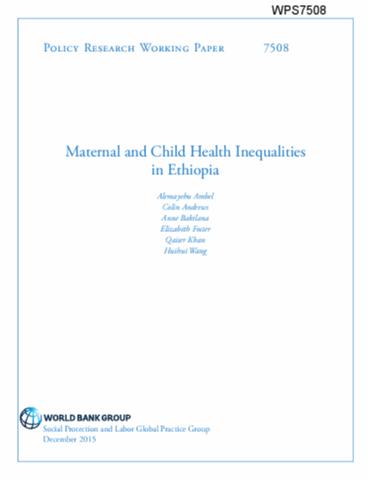Resource information
Recent surveys show considerable progress in maternal and child health in Ethiopia. The improvement has been in health outcomes and health services coverage. The study examines how different groups have fared in this progress. It tracked 11 health outcome indicators and health interventions related to Millennium Development Goals 1, 4, and 5. These are stunting, underweight, wasting, neonatal mortality, infant mortality, under-five mortality, measles vaccination, full immunization, modern contraceptive use by currently married women, antenatal care visits, and skilled birth attendance. The study explores trends in inequalities by household wealth status, mothers’ education, and place of residence. It is based on four Demographic and Health Surveys implemented in 2000, 2005, 2011, and 2014. Trends in rate differences and rate ratios are analyzed. The study also investigates the dynamics of inequalities, using concentration curves for different years. In addition, a decomposition analysis is conducted to identify the role of proximate determinants. The study finds substantial improvements in health outcomes and health services. Although there still exists a considerable gap between the rich and the poor, the study finds some reductions in inequalities of health services. However, some of the improvements in selected health outcomes appear to be pro-rich.


